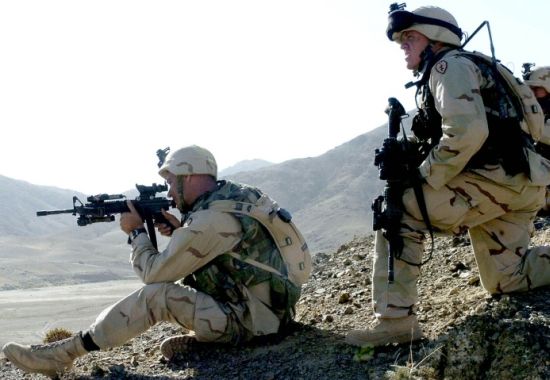
Image Credit: CredoNews
Not surprisingly, the army used a whopping 4 billion gallons of jet fuel, 220 million gallon of diesel and 73 million gallons of gasoline last year. The major burning grounds, for the 1st time in U.S war history, were Iraq and Afghanistan. However, it seems that the Department of Defense, which unwittingly is the largest consumer of energy in the US, is feeling a bit guilty of late. And, finally, we can witness a new trend of it going green. No doubt, they do not have much choice if they really want to achieve the goal of bringing down emissions by 30% by 2015.
Costly boot prints
During World War II, the fuel consumption was about 1.66 gallons per day per soldier, sailor or whatever. In Iraq, sixteen times as much fuel per man is needed (over 27 gallons per day).
As per an online tracking program launched in June last year, Fort Carson in Colorado emits 205,000 tons of carbon dioxide in a year. This equals the emission by a town of around 25,000 people.
Green Trends unplugged
Army basis in various parts are fast becoming experimental grounds where military is putting the latest green technology to test. At Ft. Irwin, Calif., the sandy wasteland of the high Mojave Desert, soldiers use computer-controlled solar panel, which helps in converting waste food into fuel and energy. The dome shelter also gets powered by wind turbines. The Defense Department derives 9.8% of its power by using alternative sources like solar, wind, thermal and nuclear energy. These sources are considered as the alternative to coal and petroleum. The Naval Air Weapons Station China Lake generates geothermal energy by using hot water below the surface.
In 2007, a brigade of about 4,000 to 5,000 in Ft. Irwin was spending $3 million to rent the tents. The tents were built with two to three inches of insulating foam and solar- reflective coating. By doing so, the use of generators reduced by 45% to 75%, which in turn helped in reducing the carbon emissions by 35 million pounds each year.
Green future in sight
It is estimated that US army could save $1 million over 5 years if they replace the old rented tents with insulated and semi-permanent ones. An investment of $22 million is required for this purpose, which would pay for itself within 9 months. In the initial contract of about $2.6 million, 81 tents and several gyms have been insulated with solar-reflective tents.
President Barack Obama’s stimulus package provides the Defense Department with $120 million to improve the energy efficiency. It also has a provision of $300 million for military research into alternative power.
Challenges
The most important challenge the US military faces is the possibility of the interference of the radar systems with the turbines. Another challenge being faced is that although there is abundant sunshine during the day, military is still looking out for means to store the energy for night time use.
Via: Los Angeles Times

